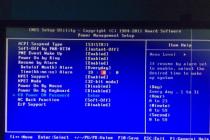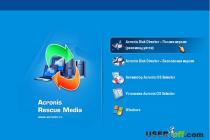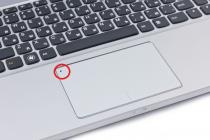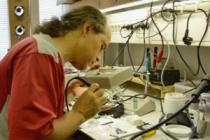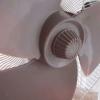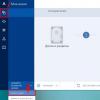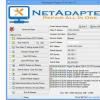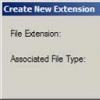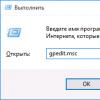Grebenshchikova Olga
The "Comfort logo" program as a universal method for correcting and developing the adaptive capabilities of schoolchildren with disabilities
PROGRAM« COMFORT LOGO» HOW UNIVERSAL METHOD OF CORRECTION AND DEVELOPMENT OF ADAPTATION CAPABILITIES OF SCHOOLCHILDREN WITH HIA
Computer technologies have confidently entered the pedagogical process of modern schools. Children with disabilities were not left out health opportunities, because they, like no one else, require special attention from the teacher. Analyzing a huge number of modern information technologies, the team of our schools prioritize topics programs, which have both a didactic orientation and a medical one, because students of our schools- boarding schools are children with disabilities. One of these programs - is a logotherapy, psycho-correction program« Comfort LOGO» . It allows correct and develop the adaptive capabilities of the human body. It is based on method functional biofeedback (FBU based on the use of biofeedback (BOS). This methodology involves that with the help of a computer and external feedback signals, practiced diaphragmatic-relaxation breathing, as well as instructions from the teacher, the child forms new, healthy breathing skills, articulation, and confident speech behavior. For pupils with speech pathology, and we have the vast majority of them, this work is especially relevant. So, according to the results of a diagnostic examination of students of our boarding schools, all children have a systemic underdevelopment of speech due to mental retardation or mental retardation. 100% of pupils have clavicular (surface) speech breathing, inexpressive speech, almost the same indicator of children with a short speech exhalation, in 15% of children speech on inspiration.
Equipment for this programs, presented by the St. Petersburg Scientific and Production Company "Amalthea", appeared in our educational institution not so long ago, and for its successful development we ourselves had to learn the correct diaphragmatic and speech breathing, which did not always work out the first time. Therefore, realizing that difficulties in working with children are inevitable, we varied the difficulty levels of the proposed tasks and used different modes available in program, I will focus on the mode « Logo» , which includes work on the formation, development, corrections and training new skills of articulation, phonation, speech breathing. Work with program« Comfort LOGO» carried out along with the traditional speech therapy work. Conditionally corrective course can be divided into four stage:
"I. diagnostic stage.
To carry out this stage in program a special diagnostic mode is laid down, with the help of which the functional state of the child's body is assessed. Diagnostics also uses traditional speech therapy tests and observations.
II. The stage of formation of a new sustainable skill of diaphragmatic breathing with an elongated, smooth exhalation, which is divided into sub-stages:
1) teaching the skill of diaphragmatic breathing (under the supervision of a teacher or the child himself, without using a computer).
2) development of a new skill of diaphragmatic breathing with external feedback (using sensors and computer).
3) the formation of a new skill of diaphragmatic breathing with an extended, smooth exhalation with external feedback.
Sh. The stage of formation of a new dynamic stereotype of speech diaphragmatic breathing, speech and speech behavior: development of new skills of articulation, voice formation, speech breathing, diction, free and without excessive psychophysiological costs of speech and confident speech behavior using external feedback.
IV. The final stage. The period of consolidation in free speech.
In the classroom, various types of feedback are used. The most interesting of them are "Animation Games" such as, for example: the game "Butterfly", "Cupcakes". The feedback signal here is represented by a game cartoon plot. Using animation tools, in the process corrections speech disorders, game moments are introduced, which increases the efficiency of the educational process. Classes on the computer school- boarding schools are held once a week, the duration in each age group corresponds to the SanPin standards. During correction course carried out in children program« Comfort LOGO» , in parallel, work is being carried out on the formation of articulation patterns, the production of sounds, development phonemic perception.
Systematic and consistent use of training programs in the process of classes, it can significantly improve the quality of speech breathing (exhalation has become longer, smoother and more uniform, aspiration, phonations have disappeared (the firm attack of the voice, articulation has been eliminated) (became more plastic, clear and coordinated). Reduced time to build and development higher mental functions: attention, memory, verbal-logical thinking, emotional-volitional sphere. Children master a new way, simpler and faster, of receiving and processing information, their attitude towards computer: not only to play, but also to gain knowledge, perform exercises. This makes children emotionally and intellectually ready for further development. development mental and creative abilities. Thus, the use of computer technology becomes another effective way to form the correct speech, correction of its shortcomings, and development of adaptive capabilities of the body of schoolchildren with disabilities.
Literature:
1. Vovk O. N. Adaptive self-regulation of breathing, articulation, voice formation, speech, behavior and psycho-emotional state of a person according to cardiorespiratory parameters / O. N. Vovk. - Saint - Petersburg: NPF "Amalthea", 2010. - 89 p.
2. Diagnostics and correction psychophysiological state / Toolkit. - Saint - Petersburg: NPF "Amalthea", 2004. - 108 p.
3. Novikova E. L. Health-saving technology for the formation of correct speech breathing in children with ONR 6 years old / E. L. Novikova. - Moscow: Preschool Pedagogy, 2007. - No. 1. - 7 p. – 512 p.
Related publications:
The formation of a creative personality is one of the important tasks of pedagogical theory and practice at the present stage. The more diverse children's.
 Children with disabilities show great interest in productive activities, and the application always arouses interest and animation in the child.
Children with disabilities show great interest in productive activities, and the application always arouses interest and animation in the child.
Didactic game as a means of development and correction of speech in preschool children Didactic game as a means of development and correction of speech in preschool children The game is the main activity of the child.
Kinesiology exercises - brain gymnastics as a means of correcting and developing the intellectual capabilities of children with disabilities Methodical development: “Kinesiological exercises - brain gymnastics as a means of correction and development of intellectual capabilities.
Consultation "Game as a priority form of development of preschoolers and primary schoolchildren" Game as a priority form of development of preschoolers and primary schoolchildren. The world of childhood is unique! He has his own vocabulary, his own folklore, his own.
Cryotherapy as a means of developing fine motor skills in children with disabilities One of the most important tasks of correctional pedagogy is to increase the effectiveness of pedagogical influence on children with special educational needs.
Animation Studio "Plasticine Crow" as a factor in the development of potential opportunities in preschoolers For 5 years, our kindergarten has been implementing the project “Animation Studio “Plasticine Crow” as a factor in the development of potential.
Patriotic education of junior schoolchildren as a part of spiritual and moral development Annotation. The article deals with the tradition of patriotic education as an important component of the spiritual and moral culture of the younger person.
Municipal state preschool educational institution - kindergarten No. 8 of the combined type of Tatarsk REPORT for participation.
The project "Continuity between the primary and secondary levels of education as a condition for the success and development of schoolchildren" Relevance At the present stage of development of education, the traditional approach to the issue of continuity between the initial and main stages.
Image Library:

The Comfort Logo program implements a functional biofeedback method based on the use of the biofeedback phenomenon.
Biofeedback- this is teaching a person a new activity for him, new skills.
When implementing the method of functional biofeedback, the physiological parameters of the body are recorded (using special equipment) and converted in a computer into feedback signals that a person perceives in the form of a sound or visual range.
The equipment of the Comfort program includes a multifunctional input unit, the Mikart device, which is equipped with cardio sensors, electromyographic and temperature sensors, through which physiological signals from the human body are received and primary processed during diagnostic procedures and functional biofeedback sessions with external feedback. connection.
The advantages of this method over traditional correction methods are:
- technical and physiological safety (provided by the fact that the flow of information is directed from the person to the device and during the removal of the signal there is no physical impact on the person)
- non-medication (the method allows you to use those internal mechanisms of adaptation of the body that are violated in life conditions)
- polyfunctionality, complexity (the body, being an integral system, reacts with changes in all its manifestations)
- objectivity
- "accuracy" of the direction of the impact (the FBU method allows you to implement a pathogenetic approach to the correction of various disorders, when the treatment is not aimed at the consequence, but at the cause of the violations)
- short-term training (by including the patient in the FBU system, when the slightest changes in state are immediately converted into feedback signals, an accurate state management skill is quickly formed)
- long-term action (since the methods of changing the state have a significant motor component, the skill is fixed at the level of body memory, which ensures its long-term storage in memory. In addition, during the formation of the skill, the nervous system itself is trained, which tends to spontaneously maintain the most favorable mode body functioning).
This program has several modes: "Cardio-FBU", "Logo", "EMG-FBU", "Temperature Biofeedback". For the purpose of logopedic correction, we use the following modes: "Cardio-FBU", "Logo", "EMG-FBU".
Frequent complaints of parents when referring to a speech therapist are slurred, inexpressive speech, poor diction. As a rule, this is associated with one of the manifestations of such a diagnosis as erased dysarthria, in which speech breathing develops pathologically.
The physiological breathing of children with erased dysarthria has its own characteristics. It is, as a rule, superficial, of the upper costal type, its rhythm is not sufficiently stable, it is easily disturbed during physical and emotional stress. The volume of lungs in such children is significantly below the age norm.
In the process of speech utterance, they have breath holding, convulsive contractions of the muscles of the diaphragm and chest, additional breaths.
In addition to the possibility of the appearance of convulsive activity in the muscles of the respiratory apparatus and impaired speech exhalation, such children have an insufficient volume of inhaled air before the start of speech utterance, as well as a shortened and irrationally used speech exhalation.
The pronunciation of individual words occurs in different phases of breathing - both on inhalation and on exhalation.
The most important conditions for correct speech are a smooth long exhalation, a clear and relaxed articulation.
Given the fact that a number of speech disorders have in their symptoms a syndrome of impaired physiological and speech breathing, this work is complex in nature and includes the “staging” of correct physiological and speech breathing.
It has been established that the most correct, convenient for speech is diaphragmatic-costal breathing, when inhalation and exhalation are performed with the participation of the diaphragm and intercostal muscles. The lower, most capacious part of the lungs is active. With diaphragmatic breathing, the inhalation is calm, without effort, through the nose, the exhalation is smooth, elongated, through the mouth. The upper chest, as well as the shoulders, remain practically motionless. We work on the formation of diaphragmatic breathing in several stages:
Stage 1.
Diagnostic stage (1-2 lessons). Primary physiological diagnosis consists of recording physiological parameters in a state of relative rest. According to the results of diagnostic sessions, the progress of indicators is calculated. Indicator progress charts can provide information on the effectiveness of the application of certain corrective techniques, as well as on the general dynamics of the child's condition. When plotting diagrams, the following parameters are taken into account:
- minimum heart rate
- average pulse;
- maximum heart rate;
- breath/min. (number of breaths per minute);
- inhalation / exhalation (the ratio of the duration of inhalation to the duration of exhalation).
In the process of observation, we determine the type of breathing of the child. There are three main types of breathing: upper breathing (clavicular), middle breathing (rib or chest), lower breathing (abdominal or diaphragmatic). With upper breathing, the ribs expand, the shoulders rise. With medium breathing, the ribs move apart and the chest expands.
If the child has upper breathing, then it is necessary to first form the skill of general muscle relaxation and teach coordinated control of muscle tension. To achieve this goal, we use the session EMG and EMG - Jacobson.
The essence of the training is that for short periods of time the maximum possible muscle tension is produced in order to achieve maximum relaxation later. For this, the installation of sensors on the trapezius muscle is used. The electrodes on the trapezius muscle are placed sequentially along the muscle fibers at a distance of 2 centimeters from each other. On the screen we see a myogram, i.e. graphic representation of the bioelectrical activity of the muscles.
The essence of training is that for short periods of time (“work phases”, usually 3 seconds), the maximum possible muscle tension is produced in order to achieve maximum relaxation during the “rest phase” (usually 5 seconds).
Visual feedback can have five modes:
- "Indicator",
- "Slides"
- "Transformation"
- "Transparency",
- "Band".
The use of the session allows you to form the skill of general muscle relaxation and teach coordinated management of muscle tension.
Visual feedback is represented by the following modes:
- “Indicator” (the trainee’s task is to raise the indicator bar above the set line in the “increase voltage” mode, and to lower the bar below the indicated level in the “lower voltage” mode. After the child has mastered the technology of working with muscle tension and successfully copes with the task, you can switch to other modes of operation:
- "Band",
- "Slides"
- "Transparency". The feedback here is the discovery, change, "manifestation" of images.
Stage 2.
Formation of a new sustainable skill of diaphragmatic breathing with an extended smooth exhalation (7-8 lessons). This type of training consists of:
a) teaching a new skill of diaphragmatic breathing under subjective control (1-2 lessons);
At preschool age, the formation of diaphragmatic breathing must be carried out at the initial stage in the prone position. In this position, the muscles of the whole body are slightly relaxed, and diaphragmatic breathing is automatically established without additional instructions. The child is in the supine position. Place one hand on the chest, the other on the stomach. The child's attention is drawn to the fact that his stomach "breathes well."
You can put a toy on your stomach to attract attention: "Let's shake the bunny", etc. This exercise lasts an average of 2-3 minutes. The exercise should be performed effortlessly to avoid hyperventilation and increased muscle tone.
In the future, various game techniques are used to train diaphragmatic breathing, its strength and duration. In doing so, the following guidelines should be taken into account:
- Breathing exercises should be organized in such a way that the child does not fix attention on the process of inhalation and exhalation.
- For preschool children, breathing exercises are organized in the form of a game so that the child can involuntarily take a deeper breath and a longer exhalation.
- All exercises for training speech breathing are associated with the performance of two main movements: the arms from the position "to the sides" move "in front" with the girth of the chest or from the position "above" they move down. Body movements are usually associated with a tilt down or to the side. Most exercises for preschool children include exhalation with consonants (mostly fricatives) or vowel phonation, which allows the speech therapist to control the duration and continuity of expiration by ear.
We also suggest using the following exercises:
"Inflate a tire"
Children are offered to pump up a “burst tire”. Children “squeeze” their hands into fists in front of their chest, taking an imaginary handle of the “pump”. A slow forward bend is accompanied by an exhalation to the sound “ssss”. When straightening, inhalation occurs involuntarily.
"Balloon"
The exercise is similar to the exercise "Tire Burst", but during the exhalation, the children pronounce the sound "ffff".
"Beetle Buzzing"
Starting position: raise your arms to the sides and pull back a little, like wings. Exhaling, the children say “zhzhzh”, lowering their hands down. Occupying the starting position, the children involuntarily take a breath.
"Geese"
Starting position: put your hands on Starting position: put your hands on your belt. Slowly tilt your torso forward without lowering your head down. Say a long "G-a-a-". Assuming the starting position, inhale.
At the same stage, you can use the paradoxical gymnastics of A.N. Strelnikova.
b) developing a new skill of diaphragmatic breathing with external feedback (4-5 lessons);
At this stage, we begin to work on the simulator "Comfort Logo" session Breathing, Cardio, which is designed to teach diaphragmatic breathing. The training plot "Indicator" is used here. In the center of the screen there is a vertical column, the height of which is proportional to the current heart rate value. If the child breathes diaphragmatically, then the column is evenly, smoothly painted over.
c) formation of a new skill of diaphragmatic breathing with an extended, smooth exhalation with external feedback (2-3 lessons). This includes such plots as "Blinds" (color), "Blinds" (slides), "Strip", "Game", where the feedback signal is the appearance, change, "development" of images.
Formation of a new dynamic stereotype of speech diaphragmatic breathing, speech and speech behavior (10-20 lessons). The third stage of work is the longest. It is dedicated to the development of new skills of articulation, voice formation, speech breathing, diction, emotionally colored, free and without excessive psychophysiological costs of speech and confident speech behavior.
Here the “Reading” mode is used, in which the student is presented with a text divided into blocks (phrases). The task of the child is to pronounce these phrases one by one as you exhale. As the exhalation pulse decreases, the phrase is colored from left to right, and if the lower pulse threshold and the expiratory length threshold are reached, the transition to the next phrase occurs. At this stage, all plots of the "Reading" mode are used, in which all speech material is divided into separate blocks: "Sounds", "Syllables", "Words", "Phrases", "Poems", "Tales", "Prose".
Stage 4.
Final stage (3-4 lessons).
The "Speech" mode is used to adapt new dynamic stereotypes of breathing, voice formation, psycho-emotional and speech behavior in the surrounding social environment. There is no feedback in this mode. For this mode, a set of slides is selected, which are shown to the child with a fixed period. The "Speech" mode contains a large didactic slide material on various topics: - "Nature", "Animals", "Insects", "Birds", "Seasons", etc.
According to this program, work was carried out with a control group of 10 children on the formation of diaphragmatic breathing. Of these, 7 children with erased dysarthria, 2 children with cerebellar dysarthria, 1 child with stuttering.
During the diagnostics, all children revealed: a high ratio of the duration of inhalation and exhalation, asynchrony of the respiratory and cardiac rhythms, high respiratory rates (number of respiratory movements per minute).


LOGO Soft Comfort is an official software solution from Siemens that allows engineers to program and debug logic controllers. In addition, the software is suitable for working with programmable relays and offers a lot of useful additional tools, which we will discuss below.
Purpose
First of all, LOGO Soft Comfort is a highly specialized software solution that is most often used in industrial production. The fact is that the code here is written in very rare languages: Ladder Diagram (LAD) and Function Block Diagram (FBD). The software solution allows you to work with several I / O channels at once and can be integrated with industrial network devices (EIB, AS-i and LON).
When writing a new program, the user can use over two hundred different blocks. He also has access to several dozen built-in functions and the ability to interact with the text display panel. In addition, LOGO Soft Comfort allows you to write instructions in the form of ladder diagrams. To write the created program to the logic module, you need to use a special device LOGO! Prom.
Additional functionality
Among other things, the functionality that is available to users of LOGO Soft Comfort, it is worth noting the Teleservice remote debugging tool. With their help, you can diagnose and eliminate malfunctions that occur during work with controllers and relays. Functions for simulating the behavior of devices in real time are also available.
Please note that LOGO Soft Comfort and all related documentation are not translated into Russian. However, given the purpose of this software, this fact is unlikely to be critical for the end user.
Key Features
- offers a complete set of tools necessary for programming logic controllers and relays from Siemens;
- can be integrated into industrial networks;
- performs debugging and simulation of compatible devices;
- allows you to create instructions in LAD and FBD languages;
- able to work with multiple output channels.
BOS complex "Comfort-Logo" for the correction and prevention of the development of speech disorders
An effective, non-medical health-saving technology for all subjects of the educational space.
The BOS complex "Comfort LOGO" is intended for speech therapists, phonopedists, phoniatrists, speech pathologists, educational psychologists of institutions of various types of the education system and social protection of the population.
Purpose of the complex BOS "Comfort-Logo"
- With the help of the "Comfort-LOGO" Biofeedback Complex, multifactorial diagnostics of speech development, targeted training in correct "speech" breathing are carried out. At the same time, there is a decrease in psycho-emotional and muscle tension, the general condition of the body improves and the basis for correct speech behavior is formed.
- formation of skills for purposeful self-regulation of functional and emotional states necessary to maintain physical, mental and social health;
- Teaching speech skills is carried out using the technology of functional biofeedback using the principle of biofeedback (BFB).
- The complex is designed to work with adults and children from 4 years old.
Composition of the BOS complex "Comfort-LOGO":
- Computer indicator of weak low-frequency signals "Mikart-M" (registration certificate FSR 2011/10250)
- Methodology "Speech therapy examination of children" for automated carrying out of the procedure of speech therapy examination of children;
- A software package for automated psychodiagnostics for studying the features of the emotional-volitional, personal, intellectual spheres of a child or an adult, their dynamics in the process of psychocorrectional work
- Consulting seminar "Hardware and software systems based on the technology of functional biocontrol with biofeedback (BFB)".
- Consulting seminar on working with the programs of the NPF "Amalteya".
Functionality of the Complex BOS "Comfort-LOGO"
DIAGNOSTICS
- Carrying out phased speech therapy diagnostics in children with automatic fixation, storage and analysis of the data obtained, with the formation of SPEECH CARDS;
- In children and adults, it is possible to determine the physiological reaction of the body during speech loads (breathing, heart rate, peripheral temperature, muscle tone), as well as the individual psychological properties of the student to identify the characteristics of his psycho-emotional state, determine the risk zone and resources and select an individual, precisely directed tactics of work of an educational-preventive or correctional-developing nature;
- Evaluation of the dynamics of changes and the effectiveness of ongoing corrective or preventive work.
PREVENTION
- the formation of sustainable skills of self-regulation, increasing the adaptive capabilities of the body;
- overcoming communication barriers, improving socialization, including in the preparation and adaptation of children to school;
- prevention of diseases of the vocal and respiratory apparatus and improvement of the speech skills of speech professions (teachers, educators, speech therapists).
PSYCHO-PHYSIOLOGICAL TRAINING
- Cardio - FBU- Diaphragmatic breathing skill training mode;
- T - FBU- in this mode, the skill of an arbitrary increase in peripheral temperature is formed. Training is provided to relieve excessive psycho-emotional, psycho-physiological stress through the regulation of peripheral temperature, muscle tone;
- EMG - FBU- training in general muscle and psycho-emotional relaxation techniques; development or restoration of muscle feeling; training the skill of coordinated control of muscle tension.
- EMG - "Jacobson"- training with a consistent voluntary change in muscle tension, learning the skill of progressive muscle relaxation.
- "LOGO" mode- teaching "speech breathing", correction of phonation disorders; functional dysphonia; violations of the pace of speech; speech anxiety; logoneuroses; stuttering hyperactivity and attention deficit;
Full set:
Correction and preventive complex "Comfort-LOGO" for 1 workplace
Correction and preventive complex "Comfort-LOGO" for 2 workplaces
THE USE IN PRACTICAL WORK OF THE PROGRAM AND INDICATOR COMPLEX BOS "COMFORT-LOGO" PROVIDES:
- correction of phonation disorders; functional dysphonia; violations of the pace of speech; speech anxiety; logoneuroses, speech disorders in children with impaired hearing and vision; alalia and aphasia; dysgraphia and dyslexia; dysarthria and dyslalia; rhinolalia and rhinophony; stuttering hyperactivity and attention deficit;
- development of higher mental functions and volitional qualities;
- learning to relieve excessive psycho-emotional, psycho-physiological stress through the regulation of peripheral temperature, muscle tone;
- training in general muscle relaxation and coordinated management of muscle tension.
- The software allows you to keep individual cards of children, forms a database with the results of all classes.
To use the preview of presentations, create a Google account (account) and sign in: https://accounts.google.com
Slides captions:
The use of the computer system "Comfort LOGO" in speech therapy practice "teacher-speech therapist Arkhipova N.A. MADOU MO d \ s "Dubravushka"
"Comfort" PROGRAM "COMFORT-LOGO" is the latest development in the field of integration of psycho-correctional, speech therapy, speech therapy programs with the method of biofeedback (BFB). disorders in children and adults. Allows you to form the correct speech and speech behavior, reduce psycho-emotional and muscle tension, improve the general condition of the body.
The main goal of the "COMFORT LOGO" program is to teach the child the skill of the correct, optimal type of breathing - diaphragmatic, articulation, voice formation, free, without excessive psychophysiological costs of speech, conceptual thinking, speech behavior, correction of the psycho-emotional and functional state in general
Computer system "Comfort Logo" SET: - computer multi-parametric indicator "MiKart"; - software (software) on two CDs; - user's manual; - author's teaching aid Vovk O.N. "Adaptive self-regulation of breathing, articulation, voice formation, speech, behavior and psycho-emotional state of a person according to cardiorespiratory parameters"; - microphone.
The software contains extensive multimedia resources: slide sets, audio (musical) accompaniment, session templates. To assess the background state of the patient and work efficiency, a diagnostic mode is provided. Each child has an individual card. All data is stored in a database.
Diagnosis, prevention and correction of speech disorders. In the course of classes on the COMFORT LOGO biotrainer, speech breathing is optimal from a physiological point of view. The objective of the course is to develop the skill of diaphragmatic breathing as the basis of speech breathing, as well as the ability to control the work of the respiratory muscles, muscles of the articulatory apparatus, face, neck, upper shoulder girdle. The wide multimedia and gaming possibilities of BFB-training, implemented by the COMFORT LOGO program, increase the motivation for learning in children, contribute to the achievement of results in the shortest possible time.
During classes with the program, periods of work alternate with periods of rest, during which children watch slides on various topics and listen to pleasant, relaxing music. We conduct classes on the computer once a week for 1 0 - 15 minutes during direct work with the computer: at 5-6 years old up to 10 minutes, at 6-7 years old up to 15 minutes, in accordance with the norms of children working at the computer.
Logo session settings
MODE "LOGO" is used in speech therapy, providing: Teaching speech breathing. Speech breathing is a highly coordinated act during which breathing and articulation are strictly correlated in the process of speech utterance. In the process of speech, the functional significance of the expiratory phase increases significantly. Reducing fatigue and optimizing the pace of speech due to a targeted decrease in the tone of the corresponding muscle groups. Practicing sound pronunciation while optimizing the respiratory function, fluency of speech, its continuity, correction of violations of tempo, rhythm and melody. Effective correction of disorders in the psychoemotional sphere caused by various general neurotic and logoneurotic disorders.
The work on the program is carried out using various types of feedback (from simple to complex): "Indicator", "Strip", "Slides", "Transform-Transparency", "Game-Animation" - the game "Butterfly", "Cupcakes" : A game cartoon scene is presented here as a feedback signal. Children especially like to work with these cartoon stories.
Plot "Blinds" (color)
Plot "Blinds" (SLIDES)
PLOT "STRIP"
PLOT "GAME" (CUPcakes)
STORY OF READING MODE
MODE "CONCEPTUAL THINKING"
Contraindications Absolute: epilepsy prohibition to work with a computer monitor; gross violations of the intellect, not allowing to understand the instructions of the methodologist. Relative: exacerbations of chronic diseases of the cardio-respiratory system; Significant cardiac arrhythmias that do not allow receiving adequate feedback signals.
Thus, the use of the functional biofeedback method has a number of positive aspects: the method significantly increases the effectiveness of classes due to the high emotional interest of the child, allows you to quickly eliminate speech disorders, and expands the possibilities of speech therapy. The acquired skill of diaphragmatic-relaxation breathing is the basis for the development of correct speech, helps to prevent a number of deviations in the somatic sphere, improves the general well-being and emotional health of children. Working with the "Comfort Logo" program is an effective help that expands the scope of the development of the personality of children - speech pathologists, providing it with new opportunities for self-realization in the socio-cultural space of a preschool institution.
THANK YOU FOR YOUR ATTENTION!
On the topic: methodological developments, presentations and notes
The use of computer technology in the correction of speech disorders in children of senior preschool age in a speech therapy center.
The use of various non-traditional methods and techniques in correctional work prevents children from fatigue, supports cognitive activity in children with various speech pathologies, increases ...
The use of computer technology in individual speech therapy classes, magazine "LOGOPED" No. 3, 2011
STUDENT TRAINING USING COMPUTER TECHNOLOGIES AND MODULAR RATING SYSTEM. STUDENT TRAINING USING COMPUTER TECHNOLOGIES AND MODULAR RATING SYSTEM. LEARNING STUDENTS USING COMPUTER TECHNOLOGIES AND MO
The use of new technologies in the educational activities of the teacher....


